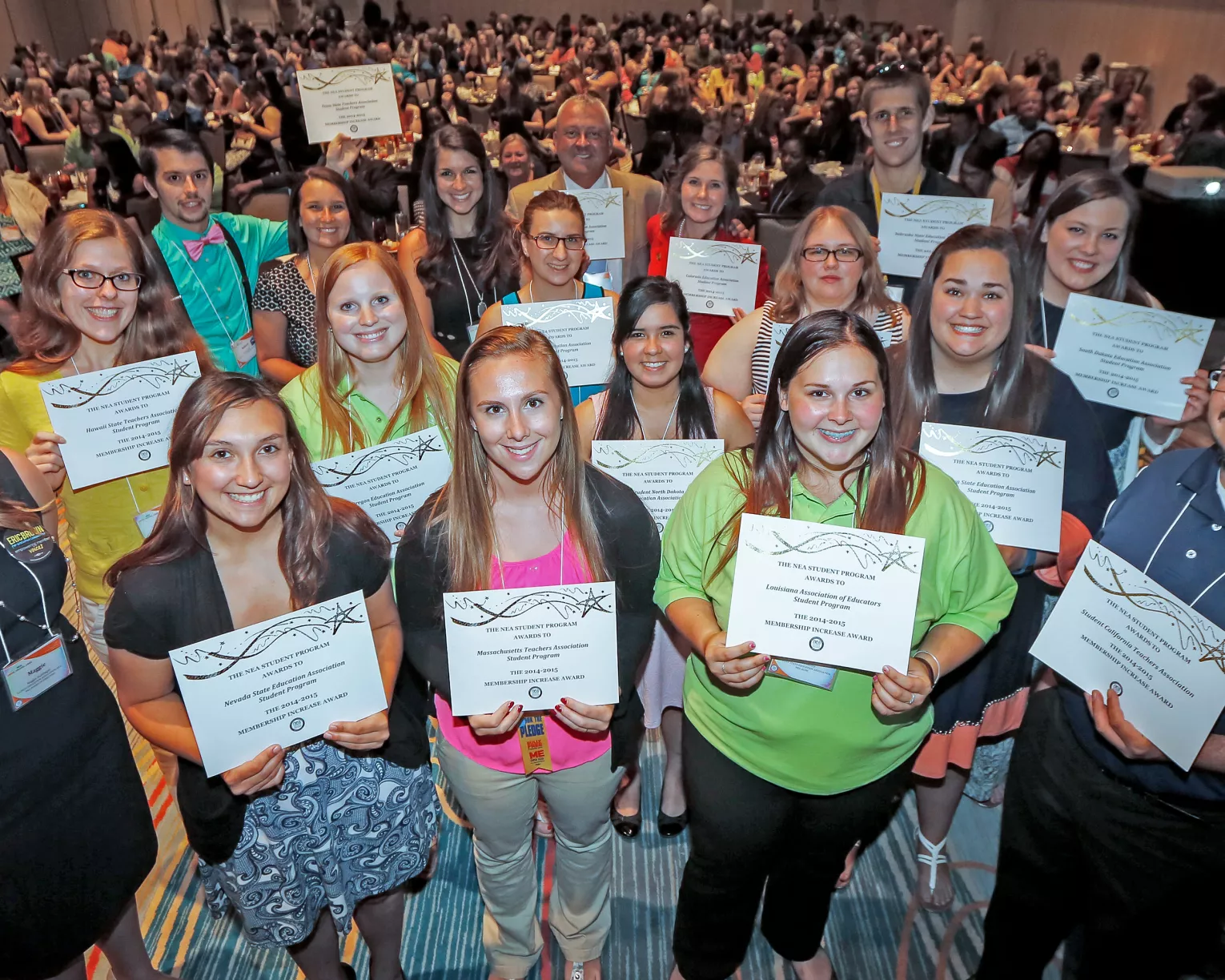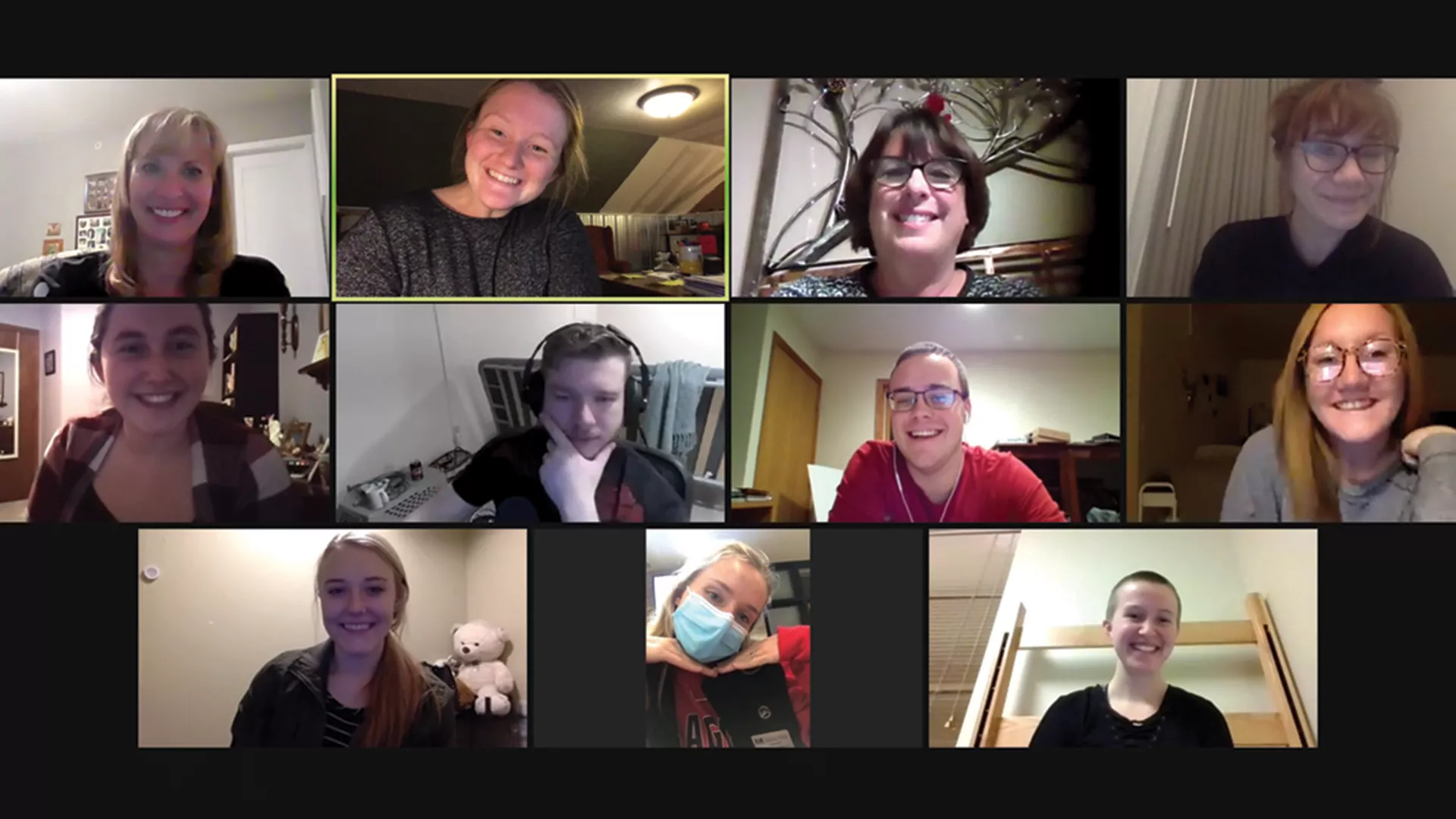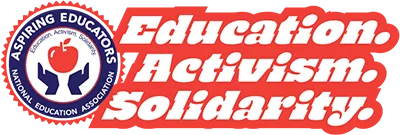Truth be told, virtual organizing is similar to traditional organizing, only the tools have changed. Both have the same goal—to encourage collective action and empower people to take on leadership roles. But now, instead of meeting face-to-face, digital platforms such as Zoom, Facebook Live, and Google Hangouts are helping us stay connected while practicing social distancing. Virtual organizing has its advantages, too. It’s accessible to more people, and you don’t have to worry about meeting space or how to get there. As you work toward building a strong campus chapter, here are some strategies to boost your digital outreach.
Be relevant and visible
When aspiring educators on your campus think about lifting up public education, you want the NEA Aspiring Educators chapter to be the first group that comes to mind. To do this, it’s important to weigh in on issues that are meaningful to potential members.
- Try this: Maintain an active social media presence. Host online events, publish op-eds, and advocate for legislation For more ideas, go to nea.org/aspiringeducators/chaptertoolkit.
Clean up lists
It’s important to identify potential members and the best ways to reach them. Creating accurate, up-to-date, and detailed outreach lists is key to an effective campaign.
- Try this: Clean last year’s membership list by holding a texting campaign or phone bank and asking people for their updated information. Create new lists by capturing emails through a petition or reaching out to an RSVP list from a big event.
Utilize different channels and platforms
The best way to reach potential members is to communicate with them on all the platforms they use. Make a list of these platforms and a plan to contact this group regularly on each of them. Creating templates and reusing content will help minimize the work involved, but the more platforms you utilize, the more likely that future members will receive your messages.
Try this: Do a digital audit, which can provide metrics for how well your social media posts are performing. Additionally, the audit can help you understand the behavior of your existing audiences—it’s likely that potential members will react to content similarly. Keep all your tools in mind when building out your content strategies. For example, if you release a blog post, think about pushing it out via email, social media channels, and through partner accounts.
Deliver consistent messaging
It’s important to stay “on message” across all of your communications. The message you develop must answer the questions: Why care? Why act? It must explain what’s valued and what’s at risk. It also must align you with others who share your values and concerns.
- Try this: Develop a message based on the value of AE membership. Keep your message simple and explain it in a sentence or two. If it requires a paragraph or two, keep working to refine and simplify it. Example: Becoming a member of the Aspiring Educators program connects you with a movement of educators supporting each other. We’re a community that will help you advocate for the resources and support you and your future students deserve.
Empower members to organize digitally
A great way to scale up your digital organizing is to tap into the most trusted people in your network—your members! They probably already have the channels and relationships to distribute your messaging effectively and will feel like part of the success of your member recruitment campaign.
- Try this: Reach out to members who are willing to amplify your content, whether through a Google Group, Facebook Group, text chain, or a group email. Send them sample scripts and social media posts. Make these members feel special by offering a titled position in the organization or inviting them to a quarterly meeting with chapter leadership.
Create long-term digital relationships
Whether online or in-person, effective organizing focuses on nurturing relationships. To join the association, aspiring educators must feel it’s worth their limited time and resources. They’re much more likely to be persuaded to join by people they know and trust. In these days of virtual organizing, it can be difficult to begin and grow these types of relationships. However, it is possible if you focus on how each platform can help members get to know one another and the organization (See below).
- Try this: Establish “Member Mondays” on social media by posting a bio and pic of a member every Monday to promote who you are as an organization. For examples, check us out on Instagram, @neatoday.
Top Virtual Platforms & Purposes
- The “public square” for members
- Public-facing page to drive engagement
- Digital ads, surveys, and petitions
- Press outreach
- A place to tout accomplishments and garner public support
- Web conferencing
- One-on-ones between leaders or organizers and members
- Group meetings
- Content that is lengthy or requires formality
- Petitions, surveys, and updates
- Member engagement
- Instagram Live videos
Website
- Long-form communications, such as mission statement, leadership bios, how to become a member, and more
- Public-facing documents, such as a calendar of events, bylaws, and constitution.
Are you an affiliate?




